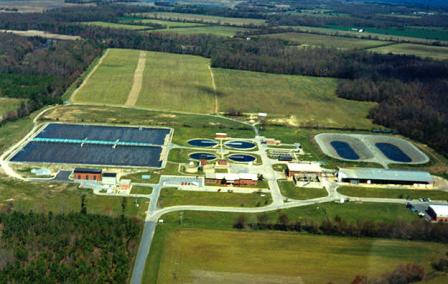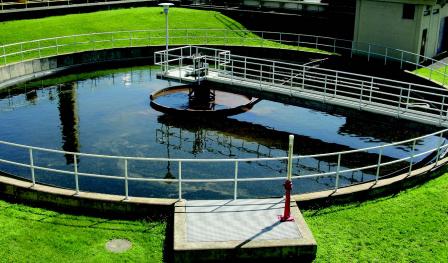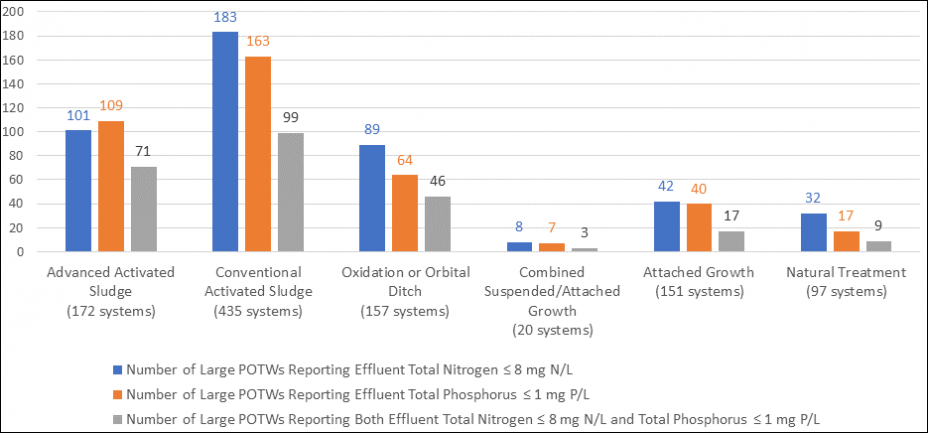National Study of Nutrient Removal and Secondary Technologies
If you are a publicly owned treatment works (POTW), please consider filling out a short questionnaire to help inform a national study examining efficient and cost-effective approaches for nutrient removal.
 Photo credit: Jane Thomas, Integration and Application Network,
Photo credit: Jane Thomas, Integration and Application Network,University of Maryland Center for Environmental Science.ExitOn this page:
- Screener Questionnaire - Available Now!
- Study Goals
- Benefits to POTWs
- Nutrient Removal Accomplished Nationwide
- Fact Sheets
- Additional Resources
- Additional Information
Screener Questionnaire – Available Now!
EPA's voluntary POTW Screener Questionnaire is now available. This short questionnaire contains multiple choice and “yes/no” questions that can be quickly and easily completed online.
EPA appreciates your participation in the questionnaire. Your contribution to this nationwide study will be instrumental in guiding a new, collective understanding of low-cost, effective solutions for reducing nutrient discharges.
Study Goals
 Some POTWs have added new treatment processes to remove nutrients, but these upgrades may not be affordable or necessary for all facilities. This study is helping EPA learn about other ways that POTWs are reducing their nutrient discharges, while optimizing operation and maintenance practices, and without incurring large capital expenses. The study has three main goals:
Some POTWs have added new treatment processes to remove nutrients, but these upgrades may not be affordable or necessary for all facilities. This study is helping EPA learn about other ways that POTWs are reducing their nutrient discharges, while optimizing operation and maintenance practices, and without incurring large capital expenses. The study has three main goals:
- Obtain nationwide data on nutrient removal.
- Encourage improved POTW performance with less expense.
- Provide a forum for stakeholders to share best practices.
Benefits to POTWs
-
Help POTWs optimize nutrient removal by providing operation and performance information from similar types of POTWs that have already achieved successful, cost-effective approaches to nutrient removal.
-
Serve as a major new nationwide data resource on nutrient removal to help stakeholders evaluate and develop achievable nutrient reduction values.
-
Provide a rich database of nutrient removal performance for POTWs, states, academic researchers, and other interested parties.
POTWs have already seen the benefits of low-cost optimization. In 2012, the Montana Department of Environmental Quality began training POTW staff in the state on nutrient removal and optimization. POTWs whose staff fully engaged in the optimization process significantly reduced their nutrient discharges. See the Fact Sheets.
Nutrient Removal Accomplished Nationwide
Initial results of the screener questionnaire help demonstrate an important aspect of the National Study: improved nutrient removal is attainable by all types of POTWs. Survey results to date show more than 1,000 POTWs with different biological treatment types (including both conventional and advanced treatment technologies) can achieve effluent total nitrogen of 8 mg/L and total phosphorus of 1 mg/L. The figure below includes those POTWs with a population served of at least 750 individuals and a design capacity flow of at least 1 million gallons per day.

Note: Survey respondents could select multiple biological treatment types.
Fact Sheets
Descriptions of low-cost adjustments to reduce nutrient pollutant discharges at sewage treatment plants.
- Kansas: High-Quality Water From Small POTWs (June 2020)
- Kentucky Operators Take The Lead in Reducing Nutrients (June 2020)
- Optimizing for Results in Montana (June 2020)
Additional Resources
Additional Information
Contact us for more information about the study (nutrient-removal-study@epa.gov).


